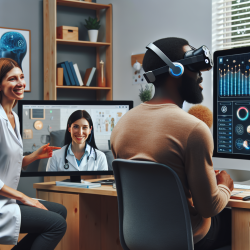The COVID-19 pandemic necessitated a rapid shift to remote services across various fields, including rehabilitation for children with special needs. A recent study titled "Telerehabilitation and Wellbeing Experience in Children with Special Needs during the COVID-19 Pandemic" sheds light on the efficacy of telerehabilitation in fostering a supportive and engaging environment for these children. Here, we distill the key findings and practical tips from the research to help practitioners improve their telerehabilitation skills.
Key Findings from the Research
The study conducted by Sarti et al. (2021) evaluated the well-being of children with Specific Learning Disorders (SLD) and Cerebral Palsy (CP) who underwent telerehabilitation during the pandemic. The results were compared with children who did not undergo telerehabilitation and with typically developing children. The study revealed several critical insights:
- Support and Respect: Children with SLD and CP reported higher scores in the dimensions of Support and Respect compared to typically developing children, regardless of whether they experienced telerehabilitation.
- Learning: Children who underwent telerehabilitation showed the highest scores on the Learning scale, indicating a greater sense of mastery and accomplishment.
- Emotional Well-being: No significant differences were found in the perception of positive and negative feelings across the groups.
Practical Tips for Practitioners
Based on these findings, practitioners can enhance their telerehabilitation services by focusing on the following areas:
- Foster a Supportive Environment: Ensure that children feel supported and respected during sessions. This can be achieved through consistent communication, positive reinforcement, and personalized attention.
- Encourage Learning and Mastery: Design activities that promote a sense of achievement. Use interactive tools and resources that keep children engaged and motivated to learn new skills.
- Involve Families: Integrate family members into the rehabilitation process. Provide them with the necessary tools and guidance to support their child's learning and well-being at home.
- Utilize Technology Effectively: Leverage technology to create dynamic and engaging sessions. Ensure that both the children and their families are comfortable using the required devices and platforms.
- Monitor Emotional Well-being: Regularly check in on the emotional well-being of the children. Address any concerns promptly and provide additional support if needed.
Encouraging Further Research
While the study provides valuable insights, it also highlights the need for further research in the field of telerehabilitation. Practitioners are encouraged to contribute to this growing body of knowledge by conducting their own studies and sharing their findings. Collaborative efforts can lead to the development of best practices that benefit children with special needs worldwide.
Conclusion
The integration of telerehabilitation into clinical practice has shown promising results in enhancing the well-being of children with special needs. By fostering a supportive environment, encouraging learning, involving families, utilizing technology effectively, and monitoring emotional well-being, practitioners can create positive outcomes for these children.
To read the original research paper, please follow this link: Telerehabilitation and Wellbeing Experience in Children with Special Needs during the COVID-19 Pandemic.










